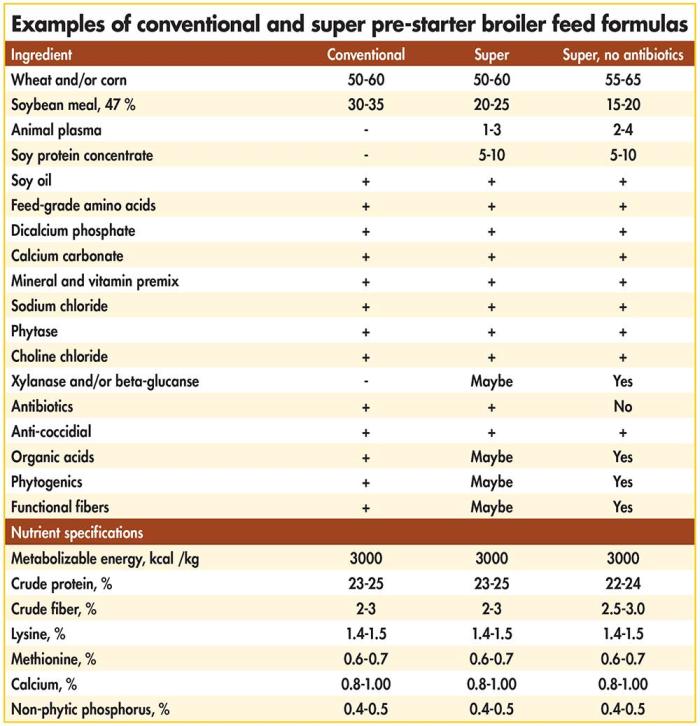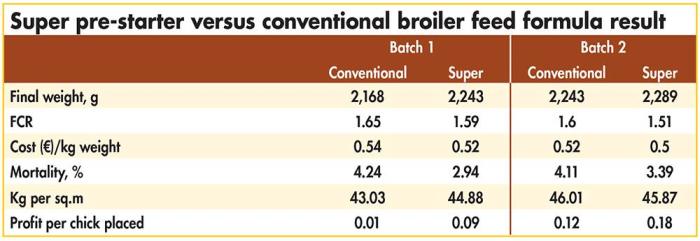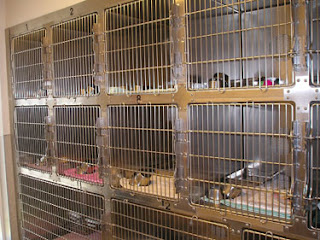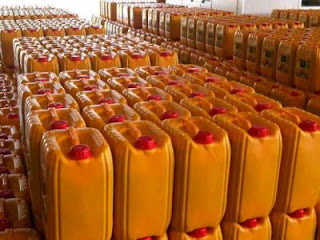Snail farming is the rearing of snails in an enclosure or captivity, where the basic needs of the snails, such as feed, lime , water etc. are provided therein for them on daily basis by the farmer. These snails are reared and harvested for profit
making.
Systems of Snail farmingThere are two main systems of raising snails, which is the;
· Indoor system.
· Outdoor system.
In indoor system, the snails are raised in pens or housing located in a building. The snails are fed with mixture of feeds ranging from fresh vegetables, concentrates, tubers and other feed stuffs. The system requires little space.
In outdoor system, the snails are reared on pasture field, where feeding is not regular and the farmer has little attention for the snails. The snails move around the
pasture sourcing for food and water to sustain their life.
However, the outdoor system can also be an avenue whereby the snails are left on the pasture also supplementary feeds in form of natural diet and synthetic feeds are provided for the snail and they can be managed well.
Also other systems are;
1. Extensive system: outdoor, free-range snail pens.
2. Mixed, or semi-intensive system: egg laying and hatching occur in a controlled environment; the young snails are then removed after 6-8 weeks to outside pens
for growing or fattening or both.
3. Intensive system: closed systems, for example plastic tunnel houses, greenhouses and buildings with controlled climate. (Note: the same options of extensive, semi-intensive, or intensive apply to feed and feeding).
Selection of site
Snail farming like other facets of farming has its own requirements and factors to be considered before venturing into the business. These factors are;
Soil type: The snail farm must be sited at a place where the soil is rich in humus and decayed plant and animal materials. Also the soil must be rich in lime and calcium (though these two minerals can the provided) for shell formation. The soil must be well drained and less compacted to enable the snails dig the ground and well aerated to allow air penetrate into the soil easily. Snails prefer a damp soil but not very wet land or land prone to flooding. These enable the snails to move easily and dig into the ground to rest and lay their eggs.
Water or moisture: The breeding season of snails is usually in rainy or cold season. However for commercial purpose, a source of water has to be provided for
irrigation and spraying, to keep the farm damp always. Snails usually seal off their aperture and go into hibernation during dry season.
Moisture can also be conserved by planting shelter plants like banana, cocoa.
Water should be made available on the farm to enhance the multiplication of the snails.
Temperature and humidity: Snails are cold blooded animal, which makes them sensitive to change in temperature and humidity. Snails prefer a place where the temperature is neither too cold or nor cold. When the temperature is too cold or too hot, the snails withdraw into their shell, this phenomenon is known as HIBERNATION.
Snails thrive best on temperature ranging between 10- 23oc
Construction of a snailery Regardless of the size and type of your snail farm, the housing system must meet the following conditions. It must be:
1. escape-proof: snails are master-escapists and unless
prevented from doing so they will quickly wander all over
your (or your neighbors’) garden or house;
2. spacious, in accordance with the growing stage of the snails (hatchlings, juveniles, breeding snails, or mature snails fattened for consumption). Snails suffer from overcrowding, which impedes their development and increases the risk of diseases. Suitable rearing densities range from 100/m2 for hatchlings to 7-10/m2 for breeding snails;
3. easily accessible and easy to work in or with, for handling the snails, placing feed, cleaning and other tasks;
4. well-protected from insects, predators and poachers. Different materials can be used for building snaileries , depending on price and availability.
The materials you will need are:
1. Decay- and termite-resistant timber, cement blocks, or mud bricks.
2. Galvanized sheets or polythene sheets.
3. Chicken wire, for protection.
4. Mosquito nets or nylon mesh, for covering the pens as protection against insects.
5. Second-hand materials, like car tires, oil drums and old water tanks.
In addition to car tires, oil drums and such materials, the following types of pens might be considered for simple snaileries:
• Hutch boxes/cages
• Trench pens
• Mini-paddock pens
• Free-range pens
Car tires, oil drums
Discarded tires or oil drums may serve as relatively cheap snail pens. Three or four tires are placed on top of each other, with chicken wire and mosquito mesh between the topmost tire and the second one from the top.
Oil drums should have some holes in the bottom for drainage, be filled with good soil to a depth of 7-10 cm, and be fitted with wire plus mosquito mesh on top. Such pens are suitable for keeping a few snails (up to about four mature snails in each container) close to the house, for private use.

Hutch boxes Description
Hutch boxes are square or rectangular, single or multi- chamber wooden boxes with lids, placed on wooden stilts above the ground at a suitable height for easy
handling. The stilts should be fitted with plastic or metal conical protectors or aprons, to prevent vermin from crawling or climbing up the stilts to attack the snails in the boxes. The protectors could be made from old tins or plastic bottles. In the middle of the lid is an opening covered with wire netting and nylon mesh. The lid should be fitted with a padlock to discourage pilfering. In the floor of the box are a few holes through which excess
water can drain out. The boxes are filled with sieved black soil to a depth of 18-25 cm. The box(es) should obviously be well protected from scorching sun or torrential rain.
Hutch boxes are useful in a semi-intensive snail breeding system. They are very suitable as hatchery and nursery pens because eggs and young snails can be easily located and observed.
Trench pens DescriptionTrench pens are adjoining snail pens of 0.6 × 0.6 m to 1 × 1 m, either dug into the ground (which must be very well- drained), or raised 40-50 cm above the ground. Outside walls and inner partitions consist of sandcrete blocks or mud bricks in either case. The pens are filled with
suitable soil to a depth of 10-15 cm. They are covered with wooden or steel frame lids with chicken wire plus nylon mesh, and fitted with padlocks to discourage
poachers. Obviously the pens must be protected against the fierce heat of the sun or heavy rain. Shredded semi-dry banana leaves may be spread in the pens to provide shelter for the snails.
Two types of trench pens are; dug in trench pen, raised trench pen
Trench pens are suitable in semi-intensive to intensive snail growing ventures. They can be used as hatchery, nursery or fattening pens, with the number of stock being adapted to the size of the snails in each case. The snails can be moved from one pen to another according to the growing cycle.
Mini-paddock pens Description
Mini-paddock pens are small square or rectangular pens, usually within a larger fenced area. They are built of bamboo and nylon mesh, or of timber, chicken wire and nylon mesh.
The walls should be some 50 cm high and be dug at least 20 cm into the ground. Wooden frames are attached to the top of the walls (extended inwards) and covered with the mesh, to prevent snails from escaping.
Plants providing shelter and/or food are planted in the pens before snails are released into them. Suitable plants include cocoyam, sweet potato, fluted pumpkin, and leafy vegetables. Rectangular pens allow the farmer easier access to the whole area without having to enter the pens. Mini-paddock pens may also be constructed higher above ground, with a completely enclosed frame, and may even be roofed. Application and use mini-paddock pens, like free-range pens are suitable as fattening pens, where snails that are no longer needed for breeding are allowed to put on weight before being collected for consumption or sale. Additional snail food may be placed in the pen, but uneaten food must be removed regularly. Food and shelter plants must be replanted from time to time.
Free-range pens Description
Essentially, free-range pens are large mini-paddock pens: a fenced area of up to 10 × 20 m, planted with plants, shrubs and trees that provide food and shelter from wind, sun and rain. Just like in a mini-paddock pen, the vertical fence must be extended inwards, to prevent snails from escaping. If the fence is constructed of fine chicken wire mesh, the overhang is not obligatory because snails dislike crawling on wire mesh.
The fence must be dug at least 20 cm into the ground. The free-range pen might even be completely enclosed and roofed.

Selecting choice of breeding stock
It is recommended to use sexually mature snails, weighing at least 100-125 g, as initial breeding stock.
Farming should preferably start at the onset of the wet season, because that is the time snails normally start to breed. Until snail farms become self-sustaining, farmers may have to collect snails from the wild or buy them cheaply in the peak season and fatten them in captivity in the off season. In relatively undisturbed forest areas, snails can be collected on days following rains. Snails are active at night and on cloudy or foggy mornings. During the day they tend to keep well hidden, so it is best to collect them at night or early in the morning, when the sun is low and the humidity high.
Farmers purchasing breeding stock from snail gatherers or from the market should expect a fairly high level of mortality as a result of poor handling and the adjustment to different foods.
The most reliable way of obtaining parental stock is from known breeders, or from agricultural institutes. Such parent snails might be more expensive than snails from other sources, but they are better and safer because they have been properly fed and managed from hatching, and have not been damaged during collection and subsequent handling. Once the snail farm is established, farmers should select breeding stock from their own snails.
Breeding stock must be selected in the wet season preceding aestivation, based on the following
attributes:
Fecundity (expected number of eggs, based on numbers laid in previous seasons)
Hatchability (percentage of eggs likely to hatch out of the total number laid) .
Establishment rate (percentage of snails likely to survive after hatching)
Growth rate Shell strength
Simple records kept by snail farmers can provide the necessary information. As a general rule, the fastest growers with the strongest shells should be selected as breeding stock. The stronger its shell, the better the snail is protected against predators.
Never rear a mixture of small and large snail types in the same enclosure. Their requirements and maturity periods are not the same.
Types of snail to rear
Only snails that live on land and are edible should be selected for farming. Some kinds of land snails harbor parasites which can cause diseases to man. The common snails that can be reared are Archachatina marginata and Achinata achatina.
Archachatina marginata: these snails are found in places where it is warm all the year, their shell are characterized by brown to pale brown colour with vertical streaks and ziz-zag lines. They weigh from 150-200gm or more at maturity. They grow to full size in 24 months if well fed and watered. They lay about 5-10 eggs four to eight times each growing season. The breeding season is from may to October (during rainy season). However, if provided with regular supply of water, food and lime, they can grow and reproduce throughout the year.
Achinata achatina: like the Archachatina marginata, they are native of west Africa. They have strong brown shells and grow to full size in two years under good management conditions. They lay from 100-300 eggs, once to two times each growing season. They have pointed tails with whitish to grey foot.
Stocking of snails into the pen With all the basic requirements in place, the snails can
now be introduced into the pen. Snails selected for the farm should be very gently handled and carefully put into a container such as basket. In this way, they can be carried to the pen without hurting them. Before putting into the pen, all grasses and weeds should be eliminated.
The snails should be put inside the pen in the evening when it is cool. They should not be introduced into the pen when the sun is hot. However , on days when there is no dew and the leaves of the plants and ground are wet, wet them before putting the snail in. Do not stock more than 15-25 matured snails per m2. There should be no over stocking. After introduction of snails, a check should be conducted the following morning to see that they have all moved. Any snail found to be dead should be removed and replaced with another one. At first the newly introduced snails will try to crawl out of the pen.
The farmer should go round in the morning to put them back but after two weeks they will used to their new home and most of them will not try to crawl out.
Feeding of snails
Snails are vegetarian and will accept many types of food. All snails will avoid plants that have hairy leaves or produce toxic chemicals, like physic nut (Jathropacurcas). Young snails prefer tender leaves and shoots; they consume about twice as much feed as mature snails. As they get older, mature snails increasingly feed on detritus: fallen leaves, rotten fruit and humus should be introduced gradually.
What snails need Snails need carbohydrates for energy, and protein for growth. In addition they require calcium (Ca) for their shells, as well as other minerals and vitamins. Snail meat is low in crude fiber and fat; for that reason, these components are of minor importance in snail feed.
Recommended food items
Leaves: cocoyam, kola, paw paw, cassava, okra, eggplant, loofa, centrosema, cabbage and lettuce. Paw paw leaves (as well as its fruit and fruit peels) stand out
in many trials as good snail food.
Fruits: paw paw, mango, banana, eggplant, pear, oil palm, fig, tomato and cucumber. Fruits are usually rich in minerals and vitamins, but low in protein.
Tubers: cocoyam, cassava, yam, sweet potato and plantain. Tubers are a good source of carbohydrates, though low in protein.
Household waste: peels of fruit and tuber, like banana, plantain, pineapple, yam especially paw paw, and leftovers like cooked rice, beans, fufu and eko. Caution:
household waste must not contain salt!
Recommendations on natural feed
Market waste: because snails are vegetarians, the cheapest way to feed them is by collecting rejected food from marketplaces. At the end of any market day, some perishable vegetables and fruits still useful for snail consumption can be collected from the dumping areas.
This would reduce the cost and labour of buying or cultivating vegetables and fruits only to feed snails.
Caution: you should not collect vegetables and fruits that are decaying.
Snails can feed on a large range of food items but feed containing waxy or hairy leaves should be avoided.
Providing the forest snail with a mixture of foods, rather than only one or two items, will enhance its growth. Food attractiveness is important in the nutrition of this species. If the food is appetizing (e.g. paw paw) the snails will eat a lot and grow quickly. If food is unattractive, however nutritious it may be, the snails will not eat much of it.
Paw paw leaves, fruit and peels are a good source of crude protein. For strong growth and good shell development, powdered calcium sources from egg shells, limestone, wood-ash, oyster shells (crushed), or bone meal, should be added to the feed at a level of about 15 to 20% of diet dry matter. Crushed oyster shell calcium is best.
Snails need water! Most is supplied by the food they consume, but additional water must be supplied in the growing pens: a water soaked sponge or a dot of cotton wool for hatchlings and juveniles, in shallow dishes (otherwise the snails may drown) for mature and breeding snails.
Supplementary vitamins: Other food plants known to contain moderate amounts of vitamins D, E and K should be added. Examples are sunflower and copra cake (vitamin D), wheat germ, lettuce and other vegetables (vitamin E), cabbage and African spinach (vitamin K).
Supplementary calcium: If the soil is not high in calcium, supplementary calcium will be needed. This can be provided by sprinkling powdered oyster or snail shells or ground limestone onto leafy vegetables.
Supplementary minerals: Other minerals can be provided by placing licking stones containing the mineral in the pen.
Feeding habit of snails: Snails are nocturnal in nature and feed on a wide variety of feed mainly at night, early morning, evening or on cold rainy days.
Causes of mortality in snails
Snails have many enemies, these include termites, soldier ants, frog, toads, rats, snail eating birds, lizards and larvae of some beetles. Common salt is also poisonous to snails.
Overcrowding is a serious cause of mortality in snail pen. When snails are overcrowded in a pen, they produce an undesirable secretion which is observed to reduce their productivity. To prevent these, the following should be done;· Examine the pen fence regularly and mend any openings.
· Use materials the keep out pests from the fence.
· Maintain the right stocking density.
· Keep away poisonous chemicals like common salt.
Harvesting of snails
Generally, snails that are well fed and managed would be ready for harvesting within 12-24 months from the date Of stocking. Also when the farmer sees a lot of baby snails in the snail pen, he could harvest the fully grown snails in the pen. Average weight of a well matured snail
is 200grams.
Harvesting is best done with the manually by hand.




























